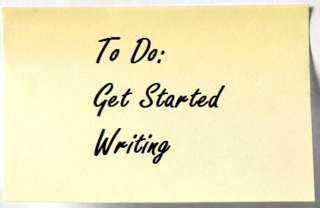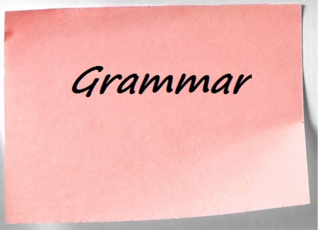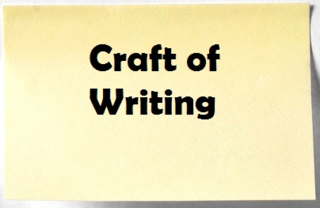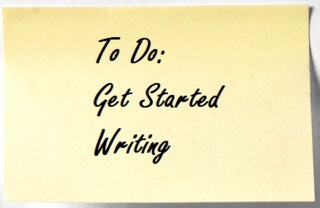Rob Bignell's Blog, page 370
June 2, 2013
Editor reading father/hiking essays in Hudson
In celebration  of Father’s Day, I’m reading about hiking and fatherhood on Saturday, June 8, from noon to 2 p.m. at Chapter 2 Books in beautiful downtown Hudson, Wis. The readings are of the completed essays in an anthology that I’m penning, Trails and Trials: Journeys of a Father and Son. Among the book’s topics: Fathers’ fears of handling a newborn, traditional vs. nontraditional roles of a father, and fathers being nurturers. Each essay shows how hiking offers the answers to these and other complex issues of being a father. After the reading, I’ll be on hand to answer questions and sign any of my various hiking books, all of which currently are available for purchase at Chapter 2. It’ll be a great day to visit Hudson - the Raise the “Woof” Animal Walk and activities, sponsored by St. Croix Animal Friends, will be held earlier that day downtown. Chapter 2 is an independently owned and run bookstore, located at 422 Second St. in Hudson.
of Father’s Day, I’m reading about hiking and fatherhood on Saturday, June 8, from noon to 2 p.m. at Chapter 2 Books in beautiful downtown Hudson, Wis. The readings are of the completed essays in an anthology that I’m penning, Trails and Trials: Journeys of a Father and Son. Among the book’s topics: Fathers’ fears of handling a newborn, traditional vs. nontraditional roles of a father, and fathers being nurturers. Each essay shows how hiking offers the answers to these and other complex issues of being a father. After the reading, I’ll be on hand to answer questions and sign any of my various hiking books, all of which currently are available for purchase at Chapter 2. It’ll be a great day to visit Hudson - the Raise the “Woof” Animal Walk and activities, sponsored by St. Croix Animal Friends, will be held earlier that day downtown. Chapter 2 is an independently owned and run bookstore, located at 422 Second St. in Hudson.
Need an editor? Having your book, business document or academic paper proofread or edited before submitting it can prove invaluable. In an economic climate where you face heavy competition, your writing needs a second eye to give you the edge. I can provide that second eye.
Related articles
 Editor releases first "Hittin' the Trail" guidebook
Editor releases first "Hittin' the Trail" guidebook Editor's latest hiking guidebook now out
Editor's latest hiking guidebook now out Editor reading father/hiking essays in Menomonie, Wis.
Editor reading father/hiking essays in Menomonie, Wis. Redbery Books in Cable selling my hiking books
Redbery Books in Cable selling my hiking books Book now for sale at Chapter 2 bookstore
Book now for sale at Chapter 2 bookstore
June 1, 2013
Drafting: Write on paper or type on computer?
What’s the  best way to write your book: writing it out by hand on paper or typing on a computer?
best way to write your book: writing it out by hand on paper or typing on a computer?
Interestingly, this is a hotly debated topic among writers. A number of discussion boards list it as a topic, and it receives the same passionate responses as an Englishman and Frenchman arguing the merit of the Euro.
It’s a matter of personal preference, of course. That preference may in part be a matter of when one grew up – for those raised in the pre-computer years (say anyone over 43), paper may simply feel more natural. For those raised after PCs became omnipresent (say anyone under 43) in everyday life, a pen may seem quite quaint.
Writing your book by hand does to have some advantages. Personally (and I’m of the over 43 crowd), I find that my writing has more flow to it as there are fewer interruptions from a word processing program’s constant green and red underlines telling me that I’ve just mistyped a word; I too often begin revising my draft before I’ve even gotten very far writing it. Speaking of such interruptions, writing a manuscript by hand can enhance a writer’s ability to stay focused on their writing. After all, when the words don’t come there’s no giving in to checking your email or responding to the latest Facebook message.
At the same time, I must admit that almost everything I write these days (including this blog entry) is done on a computer. First, writers can more easily edit as going along than waiting until the end of the draft to proofread. The result is a cleaner draft when finally saving the document. More important, though, is the computer’s advantage of portability. Writers using a computer can carry an array of their stories and notes that might otherwise require a file cabinet if it were all in paper format; because of this, when inspiration strikes for a story you’d set aside months before, you easily can access it.
How a story written on paper vs. the computer is shaped by the tool used to create certainly would be intriguing to examine. After all, stories delivered by different mediums – newspaper vs. television, for example – are affected by the way they are delivered. Any takers on this research project?
Need an editor? Having your book, business document or academic paper proofread or edited before submitting it can prove invaluable. In an economic climate where you face heavy competition, your writing needs a second eye to give you the edge. I can provide that second eye.
Related articles
 Five quotations about writing as self-discovery
Five quotations about writing as self-discovery Five great quotations for aspiring writers
Five great quotations for aspiring writers Five great quotations about writer's block
Five great quotations about writer's block The 'thinking step' when writing your book
The 'thinking step' when writing your book Five quotations about the business of writing
Five quotations about the business of writing
May 31, 2013
Build a website to promote your new book
When an editor or marketing expert tells you to get a website for promoting your book, you probably have one of two reactions: 1) “I can’t afford that” or 2) “I haven’t a clue how to do that; I wouldn’t know who to contact, and I can’t build one myself because I don’t understand anything about web page design or this html code I vaguely recall is needed to construct a website.”
editor or marketing expert tells you to get a website for promoting your book, you probably have one of two reactions: 1) “I can’t afford that” or 2) “I haven’t a clue how to do that; I wouldn’t know who to contact, and I can’t build one myself because I don’t understand anything about web page design or this html code I vaguely recall is needed to construct a website.”
This editor is here to tell you that there’s no need to worry. For very little money, you easily can build a website with just limited knowledge of how they’re constructed or how they work.
How do you do that, you ask? Let’s get started.
First, you need to find someone to “host” your website. A host keeps your web pages on a computer that is always turned on and that people can access at any time via the Internet. Finding this host is fairly easy to locate: Just type “website host provider” into a search engine and begin comparing prices and services offered. A number of reviews of these providers also are available online. It’s best to stay away from the “free” offers and pay a little for hosting a website (typically the lowest priced hosting package is sufficient, and this can range from a couple of dollars a month to a two-year contract that runs a couple of hundred dollars). The “free” option usually means that the host provider will saturate your page with ads, and sometimes they aren’t for items you’d like to see sold on your site.
Look for host providers that allow you to build a website using tools they provide. These turnkey websites are easy to construct and maintain, with many hosting companies providing online tutorials that take you step-by-step through the process. Use one of the hosting company’s templates to build your pages. Often you can pay to have a unique template built for you, but it probably isn’t necessary unless you’re promoting a series of books that you’ve written.
Next, you’ll need to plan your website. What pages will it have? What text and photos will appear on each page? Keep the pages simple – and you can have attractive, compelling pages that are simple – or in frustration you’ll end up paying someone to build them for you. During the pages ahead, we’ll discuss what these pages might be and what should appear on each one. This plan that you develop is called “site architecture.”
Finally, there is the question of whether or not you need a domain name. This is a unique for your website, such as www.mcdonalds.com (which takes you directly to the website for fast-food chain McDonald’s). This is very useful for branding and can cost less than a hundred dollars a year. You’ll probably want your own domain name if you’ve published a series of books. However, for first-time published writers, a domain name is unnecessary. When you purchase a turnkey website from a host provider, you’ll receive a free domain name, which you can partly create. The downside to such given domain names is that they typically include some element in the web address (also known as the URL) that indicates the host provider, thus making the web address a little long and not so easy to remember.
Need an editor? Having your book, business document or academic paper proofread or edited before submitting it can prove invaluable. In an economic climate where you face heavy competition, your writing needs a second eye to give you the edge. I can provide that second eye.
Related articles
 Don't get hung up on watching book sales stats
Don't get hung up on watching book sales stats Market your book by wearing your book title
Market your book by wearing your book title
May 30, 2013
Editor reading father/hiking essays in Menomonie
In  celebration of Father’s Day, I’ll be reading about hiking and fatherhood on Thursday, June 6, from 5 to 7 p.m. at Bookends on Main in downtown Menomonie, Wis. The readings are of the completed essays in an anthology that I’m penning, Trails and Trials: Journeys of a Father and Son. Among the book’s topics: Fathers’ fears of handling a newborn, traditional vs. nontraditional roles of a father, and fathers being nurturers. Each essay shows how hiking offers the answers to these and other complex issues of being a father. After the reading, I’ll be on hand to answer questions and sign any of my various hiking books, the most current of which is available for purchase at Bookends on Main. It’ll be a great evening to visit Menomonie – the annual Downtown Clean-Up is that evening from 5 to 7 p.m. Bookends on Main is an independently owned and run bookstore, located at 214 E. Main St. in Menomonie.
celebration of Father’s Day, I’ll be reading about hiking and fatherhood on Thursday, June 6, from 5 to 7 p.m. at Bookends on Main in downtown Menomonie, Wis. The readings are of the completed essays in an anthology that I’m penning, Trails and Trials: Journeys of a Father and Son. Among the book’s topics: Fathers’ fears of handling a newborn, traditional vs. nontraditional roles of a father, and fathers being nurturers. Each essay shows how hiking offers the answers to these and other complex issues of being a father. After the reading, I’ll be on hand to answer questions and sign any of my various hiking books, the most current of which is available for purchase at Bookends on Main. It’ll be a great evening to visit Menomonie – the annual Downtown Clean-Up is that evening from 5 to 7 p.m. Bookends on Main is an independently owned and run bookstore, located at 214 E. Main St. in Menomonie.
Need an editor? Having your book, business document or academic paper proofread or edited before submitting it can prove invaluable. In an economic climate where you face heavy competition, your writing needs a second eye to give you the edge. I can provide that second eye.
Related articles
 Editor releases first "Hittin' the Trail" guidebook
Editor releases first "Hittin' the Trail" guidebook Book now at Bookends on Main in Menomonie
Book now at Bookends on Main in Menomonie Book now for sale at Volume One bookstore
Book now for sale at Volume One bookstore Hiking books now on sale in Stillwater, Minn.
Hiking books now on sale in Stillwater, Minn. Idlewild Outfitters carrying 'Headin' to the Cabin'
Idlewild Outfitters carrying 'Headin' to the Cabin'
May 29, 2013
Cleaner grammar: Bated breath vs. baited breath
One of the downsides of a language is it evolves, so we go through periods in which words become extinct and other ones arise to meet the new cultural climate. Such is the case with the word “bated,” which used to be a fairly common English word meaning “hold back or abate.”
the downsides of a language is it evolves, so we go through periods in which words become extinct and other ones arise to meet the new cultural climate. Such is the case with the word “bated,” which used to be a fairly common English word meaning “hold back or abate.”
Almost no one uses “bated” anymore. But we do use “baited,” which means to “annoy or taunt.”
So, do we wait with “bated breath,” meaning you’re holding your breath with anticipation, or do we wait with “baited breath,” meaning you’re annoying or taunting your breath with anticipation?
And now, what you’ve been waiting with bated breath (or is it “baited breath”?) for – drum roll please – it’s bated breath.
Since “bated” is going the way of the dodo bird, expect to see “baited breath” more frequently, even though that spelling is a bit nonsensical.
Need an editor? Having your book, business document or academic paper proofread or edited before submitting it can prove invaluable. In an economic climate where you face heavy competition, your writing needs a second eye to give you the edge. I can provide that second eye.
Related articles
 Excuse me, er... Mam vs. ma'am
Excuse me, er... Mam vs. ma'am Is 'lest' even a word that can be used?
Is 'lest' even a word that can be used? Easy to understand comma rules
Easy to understand comma rules When exposition is necessary in a story
When exposition is necessary in a story
May 28, 2013
Delete redundancies for tighter manuscript
Among the most common mistakes I see when editing novice writers’ manuscripts is the use of redundant words. A redundancy exists when the modifying words aren’t needed because they say exactly what the word being modified implies. For example, “rich heiress” is redundant as an heiress by definition is rich.
most common mistakes I see when editing novice writers’ manuscripts is the use of redundant words. A redundancy exists when the modifying words aren’t needed because they say exactly what the word being modified implies. For example, “rich heiress” is redundant as an heiress by definition is rich.
Writer Samuel Delaney recommends a simple test to see if you’ve got a redundancy in your writing. First, replace the modifier with its antonym. So if you had the phrase “rich heiress,” you’d replace “rich” with “poor” to get “poor heiress.” If this new phrase is contradictory or ridiculous sounding, you probably have a redundancy.
Of course, there is an outside chance that given the context of your story, you might write “poor heiress” – for example, you could be writing tongue-in-cheek that the young woman has inherited a bankrupt estate. But more often than note, this isn’t the case.
Fortunately, redundancies are easy to fix. Simply delete the modifier. Just write “heiress.”
Need an editor? Having your book, business document or academic paper proofread or edited before submitting it can prove invaluable. In an economic climate where you face heavy competition, your writing needs a second eye to give you the edge. I can provide that second eye.
Related articles
 Is 'lest' even a word that can be used?
Is 'lest' even a word that can be used? Don't trust spellcheck, a junior high-aged editor
Don't trust spellcheck, a junior high-aged editor Is your book ready to be self-published?
Is your book ready to be self-published? '7 Minutes a Day' now available in paperback!
'7 Minutes a Day' now available in paperback!
May 27, 2013
Wisconsin Outdoors Fun features editor’s book
 Wisconsin Outdoors Fun featured
Wisconsin Outdoors Fun featured
my recent book Headin’ to the Cabin: Day Hiking Trails of Northwest Wisconsin, in Friday’s edition. Headin’ to the Cabin describes more than a 100 day hiking trails in Ashland, Barron, Bayfield, Burnett, Douglas, Polk, St. Croix, Sawyer and Washburn counties, including more than two dozen in the Spooner area. Wisconsin Outdoors Fun is distributed across central and eastern Wisconsin, including Green Bay, Appleton, Sheboygan and Wausau.
Need an editor? Having your book, business document or academic paper proofread or edited before submitting it can prove invaluable. In an economic climate where you face heavy competition, your writing needs a second eye to give you the edge. I can provide that second eye.
Related articles
 Editor's latest book now out in paperback
Editor's latest book now out in paperback Editor releases first "Hittin' the Trail" guidebook
Editor releases first "Hittin' the Trail" guidebook Idlewild Outfitters carrying 'Headin' to the Cabin'
Idlewild Outfitters carrying 'Headin' to the Cabin' Spooner, Wis., bookstore carrying hiking book
Spooner, Wis., bookstore carrying hiking book Metro paper features editor's hiking book
Metro paper features editor's hiking book
May 26, 2013
Draft rarely perfect after first go-round
After you’ve  brainstormed some ideas and made an outline of how you might organize those thoughts into a story or nonfiction piece, the next step is get busy “drafting.”
brainstormed some ideas and made an outline of how you might organize those thoughts into a story or nonfiction piece, the next step is get busy “drafting.”
A draft is the placement of your thoughts into complete sentences and paragraphs. This might be done in longhand on paper or typed using a word processing program.
When drafting, your goal is to shape the story or article into the perfect piece that you envision it to be. Don’t worry too much if the first time you try to do this that the piece rambles or is in some way deficient.
That’s because you always will complete a “first draft” of anything you write. With each new draft you write, you’ll cross out sections that don’t work, rewrite sentences or whole paragraphs, perhaps add entirely new ones, select better words to use, put in missing commas, fix typos, rearrange sections, and probably more. But we’ll go into that in a future blog entry that examines revising.
In addition, don’t presume that you can simply proofread or edit your first draft and be done! You might get away with that if you’re an exceptionally gifted writer (or are writing a simple and formulaic piece, such as a news brief, on deadline). While you probably are at least an above average as a writer, almost all of us need to go through several drafts before arriving at a final product.
Need an editor? Having your book, business document or academic paper proofread or edited before submitting it can prove invaluable. In an economic climate where you face heavy competition, your writing needs a second eye to give you the edge. I can provide that second eye.
Related articles
 The 'thinking step' when writing your book
The 'thinking step' when writing your book Don't rely on inspiration to carry your story
Don't rely on inspiration to carry your story Self-discipline to write a daily a must
Self-discipline to write a daily a must Five quotations about the business of writing
Five quotations about the business of writing
May 25, 2013
Writing success: Talent or hard work?
You’ve written story after story, but none of them ever seem to measure up to your favorite authors’ pieces. Meanwhile, the few of your stories that you thought were actually decent keep getting rejecting. You’re starting to wonder if you have the natural-born talent to be a writer.
story after story, but none of them ever seem to measure up to your favorite authors’ pieces. Meanwhile, the few of your stories that you thought were actually decent keep getting rejecting. You’re starting to wonder if you have the natural-born talent to be a writer.
Before you start being hard on yourself, we should explore the underlying assumption: that some people are born with a natural ability to write.
No one really knows if such a talent is “genetic”. There’s no doubt, however, that some people spend their formative years garnering the skills and mastering the skills that later will make them good storytellers. So, with a qualitative “yes”, there are people with talent.
But they can squander it. Many become journalists, speech writers or college professors who never write the Great American Novel despite their love of writing and literature. Others find their family’s needs and the daily grind of their jobs leave them too little time to write.
In any case, there are those with “less” talent who work at making themselves writers - and their writing shine brighter than many who are talented. Remember, George Orwell once was viewed as an average kid with no talent; today he is considered one of the greatest writers of the 20th century.
So you do “work” at becoming a “good” writer? Three ways:
g Read - Read a lot. Read the great works and authors of this genre, like Asimov, Bradbury and Heinlein. Read the great works and authors of all time, like Homer, Shakespeare and Hemingway. You can’t be a good writer unless you read quality works.
g Write - Olympic weightlifters had to train and practice every day for years to achieve their success. Likewise, writers have to train and practice to achieve their success. Write every day, even if what you pen isn’t any good. It will get better over time.
g Get feedback - Placing your manuscript in a drawer for no one else to see rarely leads to improvement. Join a writers’ critique group (there are many online), attend writing workshops, hire a manuscript editor (full disclosure here: I offer such a service). See how others react to your work and use their advice to improve.
Need an editor? Having your book, business document or academic paper proofread or edited before submitting it can prove invaluable. In an economic climate where you face heavy competition, your writing needs a second eye to give you the edge. I can provide that second eye.
Related articles
 Five great quotations for aspiring writers
Five great quotations for aspiring writers Five great quotations about writer's block
Five great quotations about writer's block Is your book ready to be self-published?
Is your book ready to be self-published?
May 24, 2013
Why some media ignored your press release
So you’ve written a press release and after spending hours looking for the right reporter/editor to address it to and tailoring the piece to them, you’ve sent a batch of them out. Good work! You’re on your way to getting some press coverage.
written a press release and after spending hours looking for the right reporter/editor to address it to and tailoring the piece to them, you’ve sent a batch of them out. Good work! You’re on your way to getting some press coverage.
But don’t fret or get angry when some media ignores your press release. In fact, you should expect that your press release will be passed over.
Just because you write a press release doesn’t mean it’ll get published. It may have gotten lost in the shuffle (editors receive dozens of press releases a day), it may not be deemed newsworthy enough, you may have sent it to the wrong editor, they may not have received it in time enough to be used, or maybe they’re holding it to be used in a related story in the days ahead.
Of course, your press release may get published word for word. Or it may be shortened. Or it may be rewritten. Once you send the release, the media may do any of this with your release, and they’re all within their rights to do so.
Also understand that sometimes what is newsworthy to one news organization is entirely uninteresting to another. A lot of this is based on the amount of news generated in a community and how hard-hitting that news outlet might be. For example, I had no trouble getting an article and picture in a daily newspaper for a small New Mexico town of 10,000 where I taught for a mere two school years two decades before my book came out. But the daily newspaper serving a community of half a million residents where I worked as the editorial page editor only five years before made no mention of my book whatsoever.
Regardless of all the frustration that may come from having your press release ignored, if you don’t write a press release, you’re virtually condemning yourself to no press coverage whatsoever. The goal is to get some kind of mention of your book in the newspaper, on the radio, on a blog, on a website. The more mentions made, the greater the chance that they will generate additional interest in and mentions of your book. That in turn probably means interviews and invitations to write articles. And all of that will lead to additional book sales.
Need an editor? Having your book, business document or academic paper proofread or edited before submitting it can prove invaluable. In an economic climate where you face heavy competition, your writing needs a second eye to give you the edge. I can provide that second eye.
Related articles
 Volume One features '7 Minutes a Day...' series
Volume One features '7 Minutes a Day...' series Don't get hung up on watching book sales stats
Don't get hung up on watching book sales stats Use social media to market your book
Use social media to market your book



